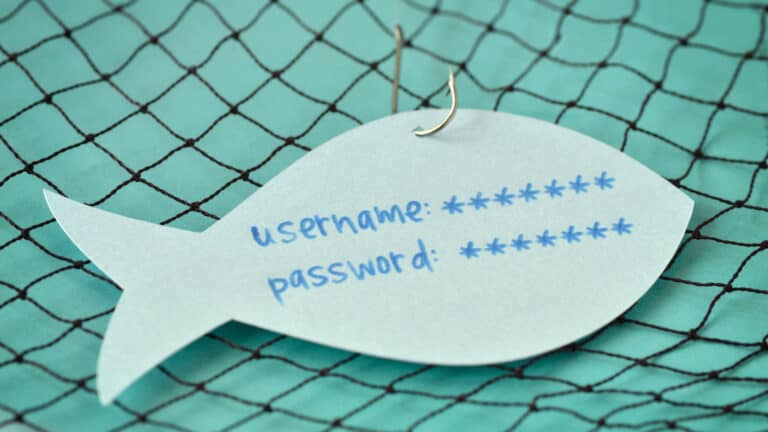
EU-Kommission will Angaben von Meta und Snapchat zu Jugendschutz
Facebooks Mutterkonzern Meta und der Online-Dienst Snapchat sollen der EU-Kommission mehr Informationen liefern, wie sie Jugendliche auf ihren Plattformen schützen.

Facebooks Mutterkonzern Meta und der Online-Dienst Snapchat sollen der EU-Kommission mehr Informationen liefern, wie sie Jugendliche auf ihren Plattformen schützen.

Das Universitätsklinikum Frankfurt muss nach dem Hackerangriff Anfang Oktober seine IT komplett neu aufstellen.

Ein Cyber-Zwischenfall bei einem großen Hafenbetreiber in Australien hat den Frachtverkehr teilweise zum Erliegen gebracht.

Viel wurde in den vergangenen Monaten über generative KI und deren Auswirkungen auf Phishing diskutiert. Die Red Team Forscher von IBM X-Force warnen nun davor, dass KI-generierte Phishing-E-Mails fast genauso überzeugend sind wie von Menschen erstellte und in einem Bruchteil der Zeit erstellt werden können

Das neue Auto kann nicht angemeldet, der Führerschein nicht abgeholt werden. Die Geburtsurkunde lässt auf sich warten, ebenso der neue Personalausweis. Die Aufenthaltserlaubnis gibt es allenfalls als provisorisches Dokument.

McAfee, ein Unternehmen im Bereich Online-Schutz, hat seine erste globale Studie über Betrugsnachrichten veröffentlicht.

Der Übergang in eine hybride Arbeitswelt mit einer immer schneller wachsenden Anzahl verbundener Geräte und mobiler Mitarbeiter stellt Unternehmen vor beträchtliche Herausforderungen. Gründe dafür sind sich zunehmend auflösende Netzwerkgrenzen, hauptsächlich verursacht durch verteilte Organisationsstrukturen und den Datenfernzugriff.

Ein Großteil der Unternehmen in Deutschland und der Europäischen Union (EU) tut sich nach wie vor schwer mit dem digitalen Wandel. Um gegenüber der internationalen Konkurrenz langfristig zu bestehen, ist technologische Souveränität ein entscheidender Faktor. Was dafür erforderlich ist, darüber sprachen wir mit Arved Graf von Stackelberg, CEO von DriveLock.

In den letzten drei Jahren hat sich die Art und Weise, wo, wann und wie Menschen arbeiten, maßgeblich verändert. Auch wenn die Pandemie dies beschleunigt hat, gibt es eine Reihe weiterer Faktoren, die neue Arbeitsmodelle ermöglichen oder sogar fordern. Dazu gehören Fortschritte bei Technologien ebenso wie der Ruf der Gen Z und Millennials nach einer höheren Flexibilität hinsichtlich ihrer Arbeit.

Die Zukunft ist digital. Auch in Krankenhäusern und Gesundheitseinrichtungen werden immer mehr Patientendaten digital erfasst und gespeichert. Das es sich hierbei um besonders sensible Gesundheitsdaten handelt, sind diese auch besonders schützenswert.
Onlineportal von IT Management
We firmly believe that the internet should be available and accessible to anyone, and are committed to providing a website that is accessible to the widest possible audience, regardless of circumstance and ability.
To fulfill this, we aim to adhere as strictly as possible to the World Wide Web Consortium’s (W3C) Web Content Accessibility Guidelines 2.1 (WCAG 2.1) at the AA level. These guidelines explain how to make web content accessible to people with a wide array of disabilities. Complying with those guidelines helps us ensure that the website is accessible to all people: blind people, people with motor impairments, visual impairment, cognitive disabilities, and more.
This website utilizes various technologies that are meant to make it as accessible as possible at all times. We utilize an accessibility interface that allows persons with specific disabilities to adjust the website’s UI (user interface) and design it to their personal needs.
Additionally, the website utilizes an AI-based application that runs in the background and optimizes its accessibility level constantly. This application remediates the website’s HTML, adapts Its functionality and behavior for screen-readers used by the blind users, and for keyboard functions used by individuals with motor impairments.
If you’ve found a malfunction or have ideas for improvement, we’ll be happy to hear from you. You can reach out to the website’s operators by using the following email
Our website implements the ARIA attributes (Accessible Rich Internet Applications) technique, alongside various different behavioral changes, to ensure blind users visiting with screen-readers are able to read, comprehend, and enjoy the website’s functions. As soon as a user with a screen-reader enters your site, they immediately receive a prompt to enter the Screen-Reader Profile so they can browse and operate your site effectively. Here’s how our website covers some of the most important screen-reader requirements, alongside console screenshots of code examples:
Screen-reader optimization: we run a background process that learns the website’s components from top to bottom, to ensure ongoing compliance even when updating the website. In this process, we provide screen-readers with meaningful data using the ARIA set of attributes. For example, we provide accurate form labels; descriptions for actionable icons (social media icons, search icons, cart icons, etc.); validation guidance for form inputs; element roles such as buttons, menus, modal dialogues (popups), and others. Additionally, the background process scans all the website’s images and provides an accurate and meaningful image-object-recognition-based description as an ALT (alternate text) tag for images that are not described. It will also extract texts that are embedded within the image, using an OCR (optical character recognition) technology. To turn on screen-reader adjustments at any time, users need only to press the Alt+1 keyboard combination. Screen-reader users also get automatic announcements to turn the Screen-reader mode on as soon as they enter the website.
These adjustments are compatible with all popular screen readers, including JAWS and NVDA.
Keyboard navigation optimization: The background process also adjusts the website’s HTML, and adds various behaviors using JavaScript code to make the website operable by the keyboard. This includes the ability to navigate the website using the Tab and Shift+Tab keys, operate dropdowns with the arrow keys, close them with Esc, trigger buttons and links using the Enter key, navigate between radio and checkbox elements using the arrow keys, and fill them in with the Spacebar or Enter key.Additionally, keyboard users will find quick-navigation and content-skip menus, available at any time by clicking Alt+1, or as the first elements of the site while navigating with the keyboard. The background process also handles triggered popups by moving the keyboard focus towards them as soon as they appear, and not allow the focus drift outside it.
Users can also use shortcuts such as “M” (menus), “H” (headings), “F” (forms), “B” (buttons), and “G” (graphics) to jump to specific elements.
We aim to support the widest array of browsers and assistive technologies as possible, so our users can choose the best fitting tools for them, with as few limitations as possible. Therefore, we have worked very hard to be able to support all major systems that comprise over 95% of the user market share including Google Chrome, Mozilla Firefox, Apple Safari, Opera and Microsoft Edge, JAWS and NVDA (screen readers).
Despite our very best efforts to allow anybody to adjust the website to their needs. There may still be pages or sections that are not fully accessible, are in the process of becoming accessible, or are lacking an adequate technological solution to make them accessible. Still, we are continually improving our accessibility, adding, updating and improving its options and features, and developing and adopting new technologies. All this is meant to reach the optimal level of accessibility, following technological advancements. For any assistance, please reach out to